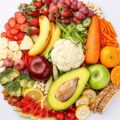Chronic inflammation is more than just a buzzword in health circles; it’s a root cause of many diseases and discomforts, including the exacerbation of pain from old injuries. While traditional medicine offers a range of treatments for managing pain and inflammation, an increasingly significant body of research suggests that what we eat can have a profound effect on reducing inflammation levels and, consequently, our pain experience.
Understanding Inflammation and Pain
Inflammation is the body’s natural response to injury or infection, a protective effort that involves the immune system fighting off potential threats. While acute inflammation is a necessary part of healing, chronic inflammation persists over time, potentially leading to various health issues, including exacerbating the pain associated with old injuries. Chronic inflammation can stem from various factors, including diet, stress, and environmental toxins.
The Inflammatory Diet: What to Avoid
At the heart of managing inflammation through diet is identifying and avoiding foods known to contribute to inflammatory responses. Refined carbohydrates, sugary beverages, and processed meats are notorious for their role in promoting inflammation. These foods not only contribute to the risk of chronic diseases but can also worsen the pain and discomfort associated with old injuries by sustaining an inflammatory state in the body.
Anti-inflammatory Foods: What to Embrace
Conversely, incorporating anti-inflammatory foods into your diet can play a crucial role in reducing inflammation and pain. Foods rich in antioxidants and omega-3 fatty acids, such as leafy greens, fatty fish, nuts, and fruits like berries and cherries, have been shown to have potent anti-inflammatory effects. By including these foods in your diet, you can help protect your body against chronic inflammation and alleviate pain associated with old injuries.
The Role of Nutrition in Pain Management
Understanding the link between diet and inflammation offers valuable insights into managing pain more effectively. Nutrition can significantly impact the body’s inflammatory processes, highlighting the importance of dietary choices in pain management strategies.
Omega-3 Fatty Acids: A Key Ingredient
Omega-3 fatty acids, found in fish like salmon and in supplements, are renowned for their anti-inflammatory properties.

They can reduce the production of molecules and substances linked to inflammation, such as eicosanoids and cytokines, offering relief from the pain associated with inflammation-driven conditions like osteoarthritis.
Antioxidant-rich Foods: Nature’s Pain Relievers
Fruits and vegetables high in antioxidants can also combat inflammation. Foods like blueberries, spinach, and kale are loaded with natural compounds that fight inflammation, reducing the pain associated with it. Incorporating a variety of these antioxidant-rich foods into your diet can help manage inflammation and pain over time.
Lifestyle Factors in Pain and Inflammation
While diet plays a critical role in managing inflammation and pain, it’s important to recognize the influence of other lifestyle factors. Regular physical activity, stress management, and avoiding known inflammation triggers like smoking and excessive alcohol consumption are also crucial in controlling inflammation.
The Importance of a Balanced Diet
A balanced diet that includes a variety of anti-inflammatory foods is key to managing inflammation and pain. Emphasizing whole, nutrient-dense foods over processed options can help reduce inflammation and improve overall health, contributing to a more effective pain management strategy.
Hydration and Pain Management
Adequate hydration is another often overlooked aspect of pain and inflammation management. Water helps flush toxins from the body, supports overall health, and can play a role in reducing inflammation and pain.
Integrating Anti-inflammatory Foods into Your Diet
Making dietary changes can be challenging, but integrating anti-inflammatory foods into your diet doesn’t have to be complicated. Simple swaps and additions, such as choosing whole grains over refined ones, incorporating more fruits and vegetables, and opting for lean protein sources, can make a significant difference in inflammation levels.
The Mediterranean Diet: A Model for Anti-inflammatory Eating
The Mediterranean diet, rich in fruits, vegetables, nuts, whole grains, and healthy fats, is often cited as an exemplary anti-inflammatory eating plan. Its emphasis on whole foods and omega-3 fatty acids makes it an excellent model for those looking to reduce inflammation and manage pain.
Supplements and Anti-inflammatory Nutrients
In some cases, dietary supplements can also support anti-inflammatory diets. For instance, turmeric and ginger supplements have been recognized for their anti-inflammatory properties.

Additionally, for those exploring natural supplements as part of their dietary regimen for pain relief, options that give you the chance to purchase GoldenMonk kratom gummies could be considered, given their popularity in the natural wellness community for their potential pain-relieving properties. It’s essential to consult with a healthcare provider before adding any supplements to your diet, as they can interact with medications and may not be suitable for everyone.
Conclusion
Diet plays a crucial role in managing inflammation and, by extension, pain relief. By understanding and implementing a diet rich in anti-inflammatory foods, individuals can significantly reduce the discomfort associated with old injuries and improve their overall quality of life. While diet is a powerful tool in this regard, it’s also important to consider other lifestyle factors, such as exercise, stress management, and adequate sleep, in the broader context of inflammation and pain management.
Jessica has a flair for writing engaging blogs and articles. She enjoys reading and learning new things which enables her to write different topics and fields with ease. She also strives to break down complex concepts and make them easy for anybody to comprehend.





